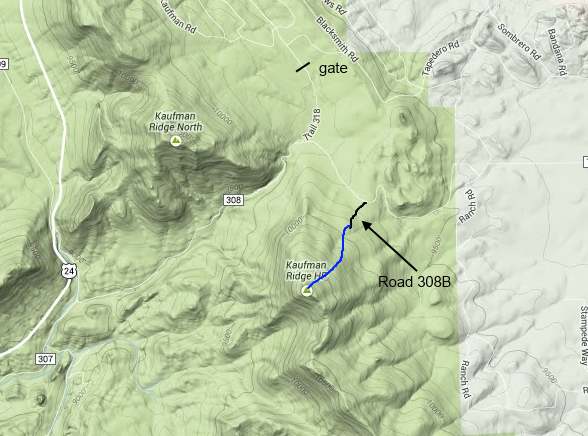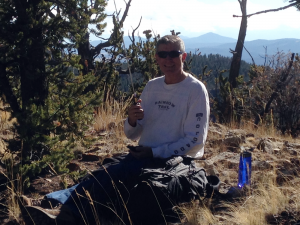 Series Seven Episode Twenty-Two – International Roundtable Nov 2014 (02 November 2014)
Series Seven Episode Twenty-Two – International Roundtable Nov 2014 (02 November 2014)
Series Seven Episode Twenty-Two of the ICQ Amateur / Ham Radio Podcast has been released. The latest news, Martin (M1MRB & W9ICQ) and Colin (M6BOY) discuss the future of commercial Long Wave radio and Martin (M1MRB & W9ICQ) is joined by Ed Durrant (DD5LP) and Frank Howell (K4FMH) for our International Amateur / Ham Radio Roundtable.
- UK radio hams start 146 MHz development
- Radio Amateurs / Hams should consider 3D printing
- K for Kernow
- New HF network planned
- Exam Checklists
- NoV suggestion for Airborne Ham Radio
- Good news on 70 MHz
Colin Butler, M6BOY, is the host of the ICQ Podcast, a weekly radio show about Amateur Radio. Contact him at [email protected].
 Bonus Episode: Pacificon 2014
Bonus Episode: Pacificon 2014
AmateurLogic.TV Pacificon 2014 is now available for download.
George visits with friends at Pacificon 2014. You’ll enjoy these interesting topics and interviews.
1:14:06
George Thomas, W5JDX, is co-host of AmateurLogic.TV, an original amateur radio video program hosted by George Thomas (W5JDX), Tommy Martin (N5ZNO), Peter Berrett (VK3PB), and Emile Diodene (KE5QKR). Contact him at [email protected].
 X108 on AM, well maybe not
X108 on AM, well maybe not
X108 for Shortwave or AM listening
Ok thought I would do some shortwave listening and see how the radio performed on the AM broadcast band.
I first tuned to AM, entered the frequency of 6.000 via the microphone key pad(very cool) to listen to Radio Havana Cuba, adjusted the filters to ATTEMPT to hear the station, 15khz no go, 2.3khz no go and .5khz of course a write off. Tuned around a bit through LSB/USB and found the station was much more intelligible in USB mode.
So I figured I might as well go to 890 WLS Chicago since they have always boomed into Thunder Bay like a local station, same as 650. Anyway, was in AM at 15k on filter and could hardly make out the station, flipped through sidebands and found USB and 2.3k filter was most pleasant for listening to AM. So as a GC receiver the radio needs some work, AM should be one of the easiest modes to perfect. I will make a video of tuning in WLS and post to YouTube.
Fred
VE3FAL
Fred Lesnick, VE3FAL, is a regular contributor to AmateurRadio.com and writes from Thunder Bay Ontario, Canada. Contact him at [email protected].
 SOTA Activation: Kaufman Ridge HP (W0C/SP-081)
SOTA Activation: Kaufman Ridge HP (W0C/SP-081)
It was a nice fall day, so Joyce K0JJW and I decided to go for an easy hike up Kaufman Ridge HP (W0C/SP-081) and do some SOTA operating. Well, maybe the hike was her idea and the Summits On The Air thing was my contribution to the plan. The hike is less than a mile and has about 900 feet in elevation gain, depending on where you start the hike.
This definitely a slacker operation: easy access, easy hike, great weather and 2m FM activation via a handheld radio and the 1/2-wave whip.
Note that there are two SOTA peaks with the “Kaufman Ridge” name: Kaufman Ridge North (W0C/SP-085) and Kaufman Ridge HP (W0C/SP-081), located near Trout Creek Pass in Colorado. Today we headed to SP-081 which we reached by following County Road 318 from Trout Creek Pass, which is also called Buckrake Drive and then Windmill Drive. These roads pass through private property to reach the San Isabel National Forest, where there is a gate that closed from December to April (see map). At this point, the road is easy 4WD, most 2WD high clearance vehicles will do fine. You can also approach from the south on FS 308 through Mushroom Gulch. 
We turned left onto FS 308 and then took a short side road FS 308B toward the summit. There are several over turn offs but 308B seems the best (shown in black on map). The road is blocked for vehicular traffic at 38.858659° N / 105.933921°W. You can continue walking on the road a ways or just head straight for the summit. While the hike is short and not that steep, there are plenty of downed logs to give you a challenge.
You never know who is going to show up on 146.52 MHz in the mountains but I had put the word out via email to some of the local hams to let them know I was doing a SOTA activation. When I got to the summit, I had a few stations already calling me and I quickly worked Ron N0MQJ, Fred N0VXE, Dave K0HTX, Jim KD0MRC, Bob W0BV and Don K0DRJ. Don was my “best DX”, about 60 miles away in Woodland Park with a few mountains in the way. Thanks to everyone that came on frequency and contacted me.
Side note: if you want to activate SP-085, go north on a forest service road (not shown on map) near where 318 and 308 intersect. Just drive a short ways north, find a parking spot and bushwack your way up the summit. You could easily activate both summits in one day.
73, Bob K0NR
The post SOTA Activation: Kaufman Ridge HP (W0C/SP-081) appeared first on The KØNR Radio Site.
Bob Witte, KØNR, is a regular contributor to AmateurRadio.com and writes from Colorado, USA. Contact him at [email protected].
 E-bay Resistors From China
E-bay Resistors From China
Many of the dealers in China were offering various packages at reasonable prices and it is hard to resist 'free shipping'.
After narrowing things down I decided on one particular dealer, electronics-salon, who had only five minor complaints in over 17,000 transactions during the past 12 month period. As well, he seemed to be selling only high-quality components, unlike many of the sellers from China.
The offering was for:
0 to 10M ohm 1/4 Watts Axial Lead Carbon Film Resistors Assorted Kit.
E-12 Series 86 Values, Total 860 Pieces (Each 10).
Resistance Tolerance : +-5%.
Rated Power : 1/4 Watt.
100% New, Never Used.
RoHS Compliant.
With free-shipping, the cost was just over one-cent per resistor and would nicely re-stock my 1/4W trays as well as provide me with many more values to choose from than at present...hard to resist!
So...what happened?
 |
| Courtesy: http://www.ebay.ca/ |
All resistors were within their 5% tolerance rating except for one of the 8.2's which measured 7.6 ohms... 2% out of tolerance.
I next smoke-tested a 680 ohm resistor for five minutes at slightly more than 1/4 watt dissipation. Measuring the resistor immediately after revealed that there had been no change in resistance.
Overall I am pleased with this purchase and would buy from this particular e-Bay seller in the future.
Steve McDonald, VE7SL, is a regular contributor to AmateurRadio.com and writes from British Columbia, Canada. Contact him at [email protected].
 Almost QRP/QRP contact
Almost QRP/QRP contact
| My drive to get our snows on....just in time! |
| Relaxing at the radio with some tea |
Mike Weir, VE9KK, is a regular contributor to AmateurRadio.com and writes from New Brunswick, Canada. Contact him at [email protected].
 Keeping it Simple
Keeping it Simple
As with the spirit of QRP and doing “more with less”; I decided to take W2LJ’s advice and downsize my radio camping gear. The process started soon after the return trip from Elkins WV and the 4,000 ft mountain top. My 15 year old tent was showing a lot of wear and tear. I was afraid a really cold rain might leave me very uncomfortable and possibly even in danger of hypothermia during the upcoming winter months. We both decided to downsize and use simple tarpaulins and bivy sacks for our dwellings.
Our fellow NAQCC club member Steve Ashcraft (KC4URI) and I decided to return to Grantsville WV once again before the snow started to fly. After all, this site is one, if not the best, places in the state to view the Milky Way from horizon to horizon.
We both arrived at about the same time and soon realized our former campsite, on the top of a 360 degree hill, would be too cold with temperatures predicted to drop near freezing. There was stiff cold wind blowing from the West too. We were forced to pitch our tarps and bivy sacks on the side of a small hill to protect us from the cold wind.
That’s Steve in the background checking the wind direction to maximize our warmth as the temperatures continued to drop towards the 30’s.
I’m glad to write we stayed quite comfortable with this gear. Modern day fabrics and insulation kept us warm as toast as we arose the next morning to a light frost (only because of the wind). If you look closely, the ice covered much more than just the windshields of the cars. There was a coating of ice from the roof to the tires.
This month is the anniversary of the West Virginia Chapter of the NAQCC Club. It’s been a very busy time with two different camping trips in October. As usual, Steve’s Elecraft K-1 did a fantastic job with the contacts on the this trip. Of the 15 contacts we made on this trip, 13 were NAQCC club members.
The highlight of the trip was having a long talk with a bow hunter in Wisconsin. Ken (WA9JTU) was at his cabin at the time. It had a nice metal roof which he loaded up for the antenna. Many of the QSO’s were about deer, which we saw very little of because of howling coyotes and barking farm dogs in the countryside. A good dog is the best burglar alarm money can buy in the country. It was especially rewarding to work two members of our “core group” who were back in Charleston. Both AC8LJ and W8GDP had 599 signals.
As usual, Steve fixed a great breakfast before breaking camp the next morning. Biscuits and gravy really hit the spot on this cold morning.
The West Virginia Chapter is having our slow CW net on 40 meters again during the winter months. If you’re just kicking around and trying to stay warm, tune to 7.117 MHz at 9:00 PM (local time) and we’ll chat about the weather and radio. The net will be repeated each Wednesday night until the temperatures start to rise again.
John Smithson, Jr., N8ZYA, is a regular contributor to AmateurRadio.com and writes from West Virginia, USA. Contact him at [email protected].
















